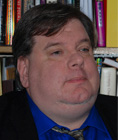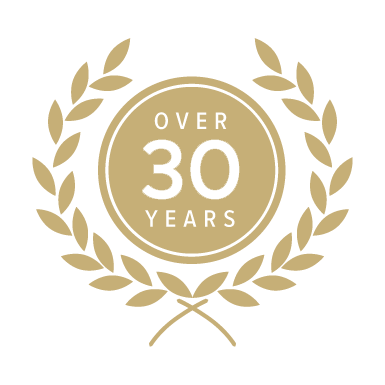Understanding the Scientific Literacy of Jurors
Over the last few years there has been a lot of differing research and opinions about the influence of popular media and entertainment on jury deliberations. One of the few consistent conclusions is that juries are expecting scientific evidence. Scientists are called as experts in civil and criminal proceedings to satisfy this expectation; but are they just smoke and mirrors or do they add to the trier of fact’s understanding of the case? To answer this question we need to consider what level of science does the average juror truly understands and where that baseline knowledge comes from.
There are more options for formal education in the modern day United States than almost any other time or place in world history. Regardless of social class or economic status everyone is guaranteed an education through the end of high school and there are multiple opportunities for almost anyone to pursue higher education. Certainly therefore there is ample opportunity for people to acquire the needed baseline knowledge to understand scientific evidence.
Despite the opportunity, it is commonly said that scientific literacy in the United States is lower than many industrialize nations and is getting worse. This position is supported by research from the National Center for Education Statistics. This research shows that the average scores of elementary students have fallen a little more than twenty percent since 2007. (1)
Fortunately by high school there is the expectation that students receive some scientific education. The Indiana Core 40 requirements for a general diploma for example, include 6 credits of math and 6 credits of science.(2) In practical terms this means that the average high school graduate will have learned some algebra, geometry and basic physical science. The result of this is that in international surveys approximately 50% of the US high school student base scores a PISA level 3 or higher on scientific literacy. (3)
From there the percentages fluctuate significantly by demographic and geography, but the department of education estimates that on average almost 80% of the enrolled high school students graduate.(4) About 66% of the high school graduates continue on to college,(5) but only about 9% enter STEM programs.(6) Based on these numbers we can conclude that the primary formal scientific education for 95% of the population occurs in high school.
So we are left with a reality that about 95% of the US population will never have interacted with the equipment or techniques typically used to evaluate scientific evidence for court. Any existing baseline knowledge must therefore have come from another source. Media and entertainment sources may well be providing that baseline knowledge.
For good or ill, popular media presents science and educates people on its capabilities and juries expect the reality to match the fiction. In one survey prosecutors reported that juries often complained about “missing” scientific evidence like DNA or fingerprints, even when such evidence was unnecessary or inappropriate. (7) Similar issues arise in civil cases where jurors may question why no elemental analysis was done on the lipstick that wasn’t filled properly into its tube.
For scientific evidence to be more than just smoke and mirrors, the expert has to not only provide the baseline missing from the juror’s formal education but must also supplant the expectations of fiction. Based on the PISA scores, approximately half of the US population can be expected understand clearly defined concepts and employ sequential decision making strategies in science and math.(3) Most analytical comparisons can be presented as clearly defined concepts and reasoned sequential actions.
The average person has not had a significant scientific education, but that doesn’t mean that they can’t understand the science. They simply haven’t formally learned it beyond the expectations of high school. The expert therefore needs to be an educator who approaches a jury like a class of college freshmen. If the real life scenario is explained properly the juror will be able to tell fact from fiction and be able to understand why the expert performed the tests he did and what the significance of those tests is.
References:
- National Center for Education Statistics (NCES), Trends in International Mathematics and Science Study (TIMSS) International Data Explorer, retrieved from http://nces.ed.gov/surveys/international/ide.
- Indiana Core 40. Retrieved from http://www.doe.in.gov/ccr/indianas-diploma-requirements
- Organization for Economic Cooperation and Development (OECD), Program for International Student Assessment (PISA), 2012.
- Public High School Four-Year On-Time Graduation Rates and Event Dropout Rates: School Years 2010–11 and 2011–12. Retrieved from http://nces.ed.gov/pubs2014/2014391.pdf
- Norris, Floyd (April 26, 2014) Fewer U.S. Graduates Opt for College After High School. The New York Times. Retrieved from http://www.nytimes.com
- Students in STEM Fields by Gender and Race/Ethnicity. Retrieved from http://trends.collegeboard.org/education-pays/figures-tables/students-stem-fields-gender-and-race-ethnicity
- Andrew P. Thomas, The CSI Effect: Fact or Fiction, 115 Yale L.J. Pocket Part 70 (2006), http://yalelawjournal.org/forum/the-csi-effect-fact-or-fiction

Charles A. Steele is an expert witness and the owner of Aneval Inc., a product development and analytical testing consultancy. He has managed the laboratories and quality system for the largest domestic dye and pigment company and has developed products for multiple markets including the forensic, personal care and plastics industries. In addition to his consulting practice, he teaches physics and math and is currently developing a forensic science program at Purdue North Central and Calumet Campuses (soon to be merged into Purdue Northwest). Mr. Steele is also an adjunct faculty member in the Biopharmaceutical Science Department at the University of Illinois at Chicago where he is conducting research on how lay jurors understand scientific evidence.

